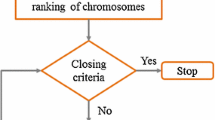Abstract
Wireless sensor networks are application specific and consist of large number of sensor nodes deployed in a harsh environment/area. Sensor nodes are deployed randomly to monitor or sense the area of interest. Wireless sensor networks have a wide range of application such as military surveillance, environment monitoring, agriculture, health monitoring and many more. Reliability of a wireless sensor network is defined in terms of area covered by sensor nodes and redundancy in sensed data. Redundancy in data is caused by overlapping in sensed area of nodes. Redundancy is required to gather high quality of information. Sensor nodes have limited battery power and harsh deployed environment makes it quite impossible to recharge or replace the battery of nodes. Energy of nodes is consumed in sensing, computing and communicating data. Due to the non-uniform energy consumption of nodes in field, nodes start dying over the time. As nodes start dying, area is not completely sensed and redundancy of data also decreases. That makes the network unreliable. Hence the gathered data from the network is also unreliable. So it is necessary to find when network is in unreliable state so that proper action can be taken. In this paper, we have proposed a genetic algorithm based method to find whether wireless sensor network is reliable or unreliable. Our proposed method finds the optimal minimal number of nodes that can sense the whole area with minimum desired redundancy in data to have good quality of information gathered. Minimum number of nodes and minimum required redundancy for a network are application dependent. We have experimented with different number of topologies and different parameters. Our result show that for a network to be in reliable state at least 48% to 52% of the initial nodes (random) should be active to sense the complete area with 20% to 30% overlapping the sensed area respectively.
Access this chapter
Tax calculation will be finalised at checkout
Purchases are for personal use only
Preview
Unable to display preview. Download preview PDF.
Similar content being viewed by others
References
Akyildiz, I.F., Su, W., Sankarasubramaniam, Y., Cayirci, E.: Wireless sensor networks: a survey. Computer Networks 38(4), 393 (2002)
Estrin, D., Govindan, R., Heidemann, J.S., Kumar, S.: Next century challenges: Scalable coordination in sensor networks. In: MOBICOM, pp. 263–270 (1999)
Arora, A., Dutta, P., Bapat, S., Kulathumani, V., Zhang, H., Naik, V., Mittal, V., Cao, H., Demirbas, M., Gouda, M., Choi, Y., Herman, T., Kulkarni, S., Arumugam, U., Nesterenko, M., Vora, A., Miyashita, M.: A line in the sand: a wireless sensor network for target detection, classification, and tracking. Comput. Netw. 46(5), 605–634 (2004)
Mainwaring, A., Culler, D., Polastre, J., Szewczyk, R., Anderson, J.: Wireless sensor networks for habitat monitoring. In: Proceedings of the 1st ACM International Workshop on Wireless Sensor Networks and Applications, WSNA 2002, pp. 88–97. ACM, New York (2002)
Selavo, L., Wood, A.D., Cao, Q., Sookoor, T.I., Liu, H., Srinivasan, A., Wu, Y., Kang, W., Stankovic, J.A., Young, D., Porter, J.: Luster: wireless sensor network for environmental research. In: SenSys., pp. 103–116 (2007)
Milenković, A., Otto, C., Jovanov, E.: Wireless sensor networks for personal health monitoring: Issues and an implementation. Comput. Commun. 29(13-14), 2521–2533 (2006)
Tavares, J., Velez, F.J., Ferro, J.M.: Application of wireless sensor networks to automobiles. Measurement Science Review 8(3), 65–70 (2008)
Flammini, A., Ferrari, P., Marioli, D., Sisinni, E., Taroni, A.: Wired and wireless sensor networks for industrial applications. Microelectron. J. 40(9), 1322–1336 (2009)
Roman, R., Alcaraz, C., Lopez, J.: The role of wireless sensor networks in the area of critical information infrastructure protection. Inf. Secur. Tech. Rep. 12(1), 24–31 (2007)
Cormen, T.H., Stein, C., Rivest, R.L., Leiserson, C.E.: Introduction to Algorithms, 2nd edn. McGraw-Hill Higher Education (2001)
Mitchell, M.: An Introduction to Genetic Algorithms. MIT Press, Cambridge (1998)
Keshavarzian, A., Lee, H., Venkatraman, L.: Wakeup scheduling in wireless sensor networks. In: Proceedings of the 7th ACM International Symposium on Mobile Ad Hoc Networking and Computing. MobiHoc 2006, pp. 322–333. ACM, New York (2006)
Younis, O., Krunz, M., Ramasubramanian, S.: Node clustering in wireless sensor networks: Recent developments and deployment challenges. IEEE Network Magazine 20, 20–25 (2006)
Liu, J.-S., Lin, C.-H.R.: Energy-efficiency clustering protocol in wireless sensor networks. Ad Hoc Networks 3(3), 371–388 (2005)
Author information
Authors and Affiliations
Corresponding author
Editor information
Editors and Affiliations
Rights and permissions
Copyright information
© 2013 Springer-Verlag Berlin Heidelberg
About this paper
Cite this paper
Pal, V., Singh, G., Yadav, R.P. (2013). Genetic Algorithm Based Method for Analyzing Reliability State of Wireless Sensor Network. In: Satapathy, S., Udgata, S., Biswal, B. (eds) Proceedings of the International Conference on Frontiers of Intelligent Computing: Theory and Applications (FICTA). Advances in Intelligent Systems and Computing, vol 199. Springer, Berlin, Heidelberg. https://doi.org/10.1007/978-3-642-35314-7_66
Download citation
DOI: https://doi.org/10.1007/978-3-642-35314-7_66
Publisher Name: Springer, Berlin, Heidelberg
Print ISBN: 978-3-642-35313-0
Online ISBN: 978-3-642-35314-7
eBook Packages: EngineeringEngineering (R0)




